| HOME |
|---|
VULPECULA
The Little Fox
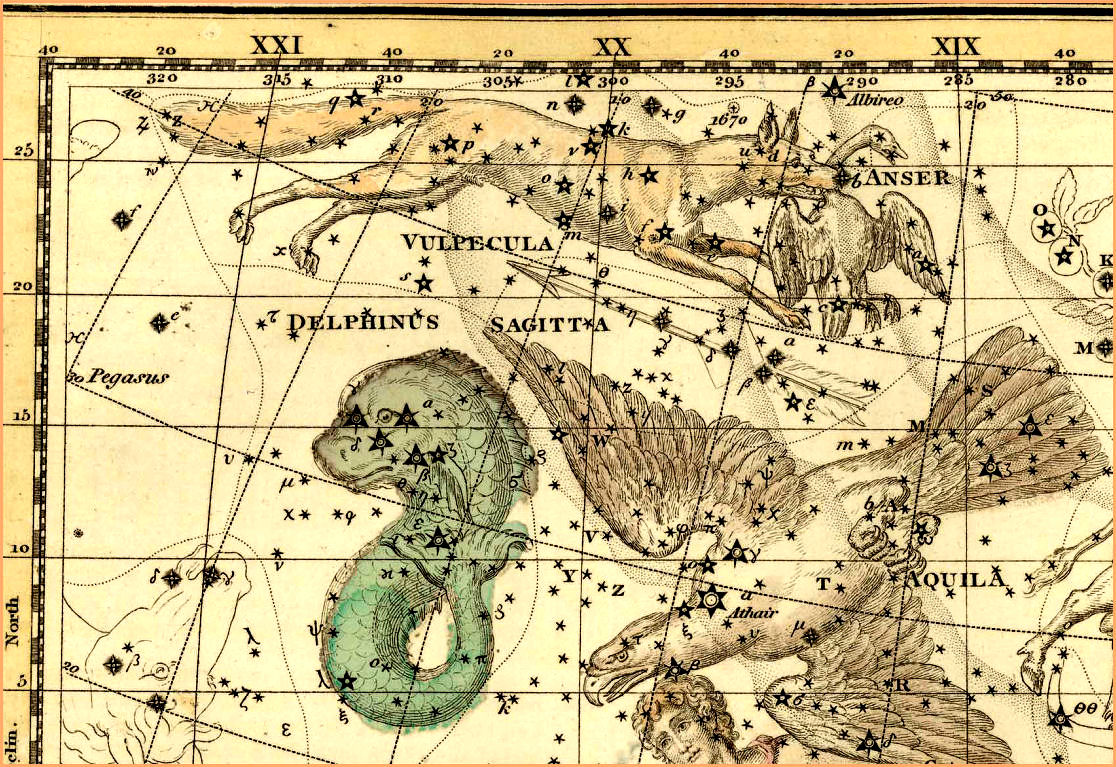
Vulpecula - Celestial Atlas by Alexander Jamieson - 1822
| HOME |
|---|

The constellation Vulpecula was one of the seven introduced by Polish astronomer, Johannes Helvelius, in 1690. Its original name was “Vulpecula cum Ansere,” the little fox with a goose, and depicted a fox with a goose in its mouth. In modern astronomy the goose has vanished, leaving just the fox. However, the name "Fox and Goose" has endured, adorning the signage of more than a few neighbourhood pubs.
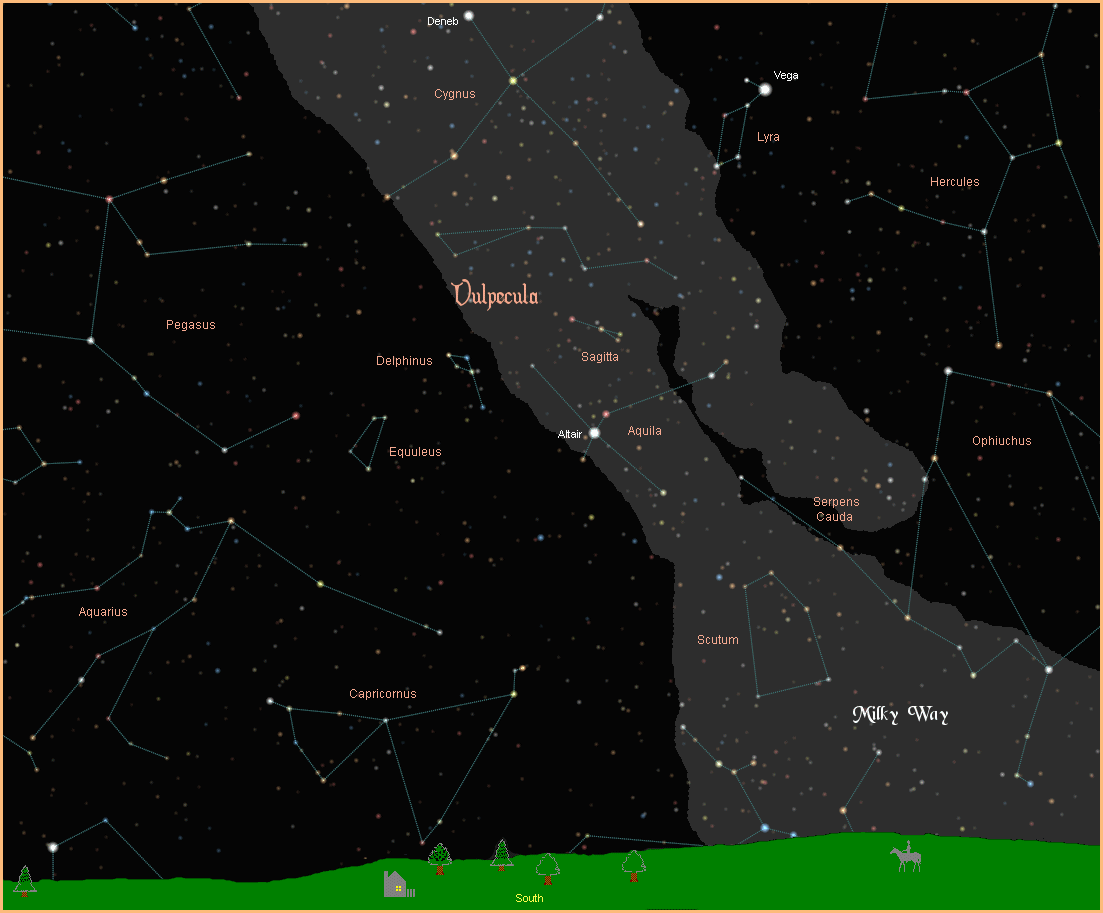
Alpha Vulpeculae is named Anser, Latin for goose. It is the only named star in the constellation, and the only star to be allotted a Bayer designation. The remainder of the stars are known only by their Flamsteed numbers, assigned as usual from west to east, the direction the stars take across the sky.
Anser is an M0III red giant, about 50 times larger than our Sun. Although it is the brightest star in the constellation it only manages the relatively dim magnitude of 4.44, owed in large part to its considerable distance of 297 light years.
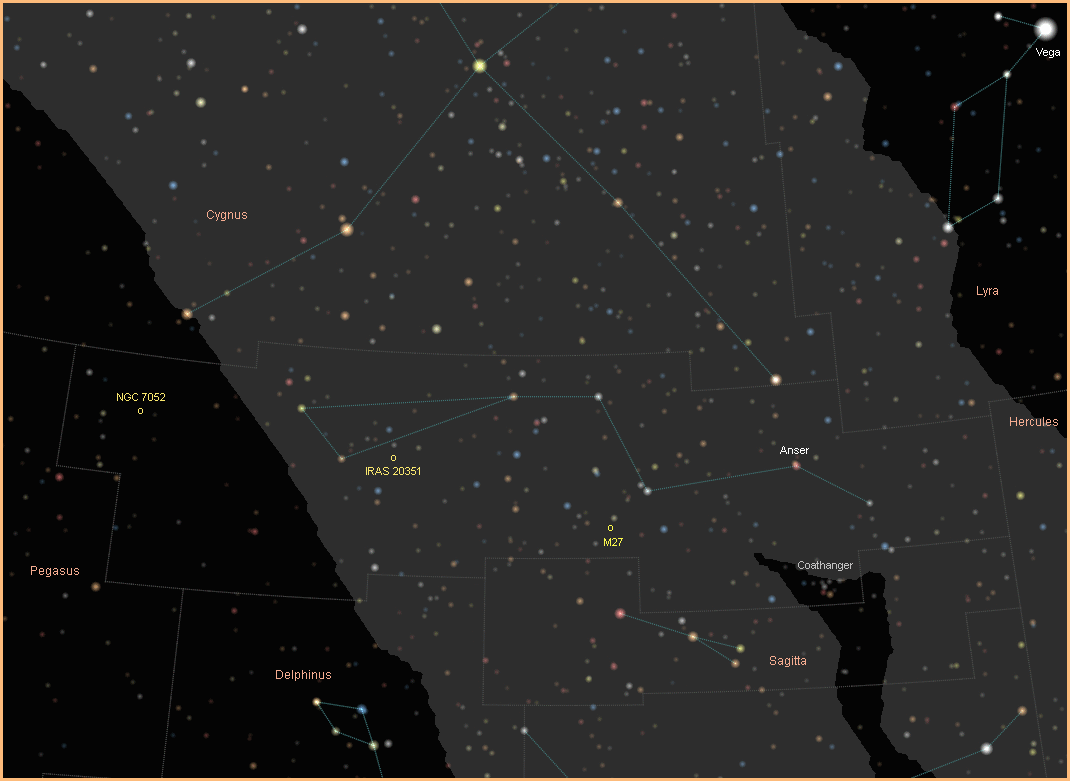
Hiding down in a bottom corner of Vulpecula is a small but very distinctive grouping of stars that bears a striking resemblance to an upside-down Coathanger. Known also as Brocchi's cluster, or Collinder 399, it is a pleasing sight through a small telescope or binoculars. The brightest of the ten stars that make up this little asterism is 4 Vulpeculae, located at the top (or bottom) of the inverted hook of the Coathanger. It is a G9 yellow/orange giant with a magnitude of 5.14, about 272 light years away.
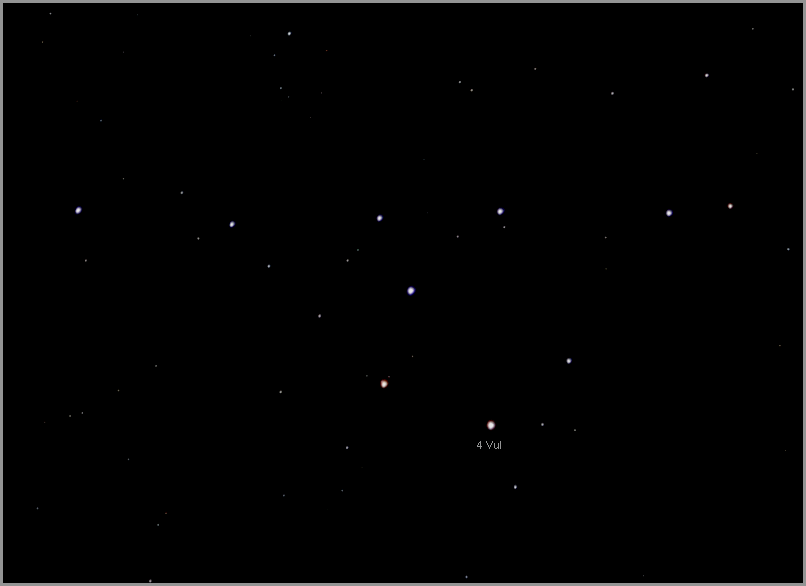
To date four planets have been discovered in the constellation of Vulpecula. They are all gas giants larger than Jupiter, and their parent stars too dim to see with the naked eye. For more information on these and other extrasolar planets, visit NASA's New Worlds Atlas, and The Open Exoplanets Catalogue.
Although Vulpecula is a small, dim constellation, it does have one major attraction - the Dumbbell Nebula - one of the first objects new telescope owners look at. Considered by many to be the finest planetary nebula in the sky, M27 was the first of its type ever discovered, back on July 12, 1764 by the famous French astronomer Charles Messier. The photo below shows the nebula much as Messier might have seen it, through a small scope at high magnification.
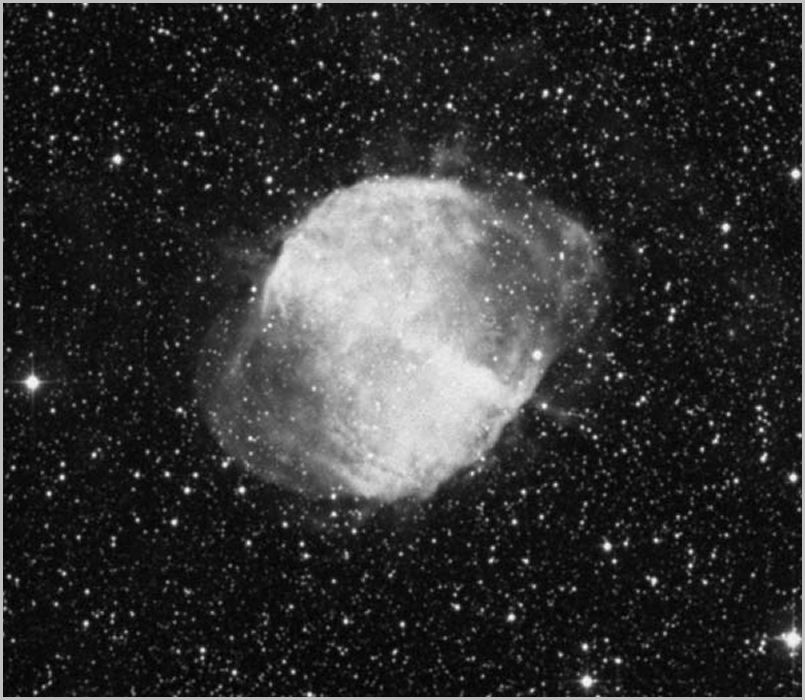
And this is what M27 looks like through the lens of the 8.5 meter telescope of the European Southern Observatory high in the Chilean Andes. Like all planetary nebulae, it is a cloud or shell of expanding gas, cast off by a dying star at its centre. The central star that created this colourful cloud is clearly visible in the image below. It is an extremely hot O3 blue dwarf with a surface temperature of about 85,000 degress K, and a magnitude of 13.5. The nebula itself shines at magnitude 7.4, and is 1,200 light years away. It stretches over 2.5 light years across, 4,000 times greater than the distance from the Sun to Pluto. And it is growing ever larger, expanding at the rate of 17 miles per second.
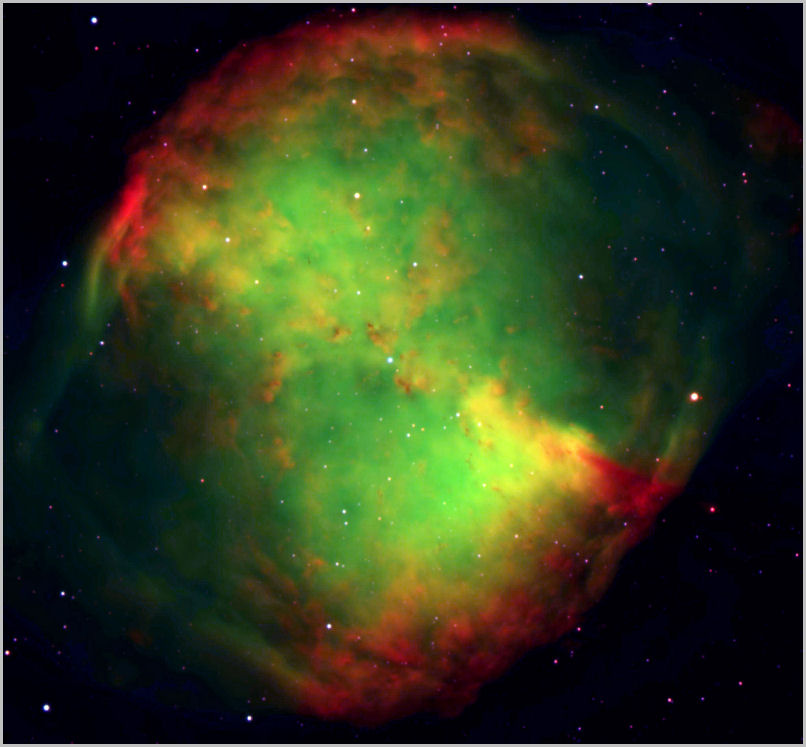
Up in the clarity of space, above Earth's interfering atmosphere, the Hubble Space Telescope peers deep inside M27, exposing the intricate details of the nebula, showing knots of gas ionized and glowing from the intense thermal, electromagnetic energy of the dying star at its core.
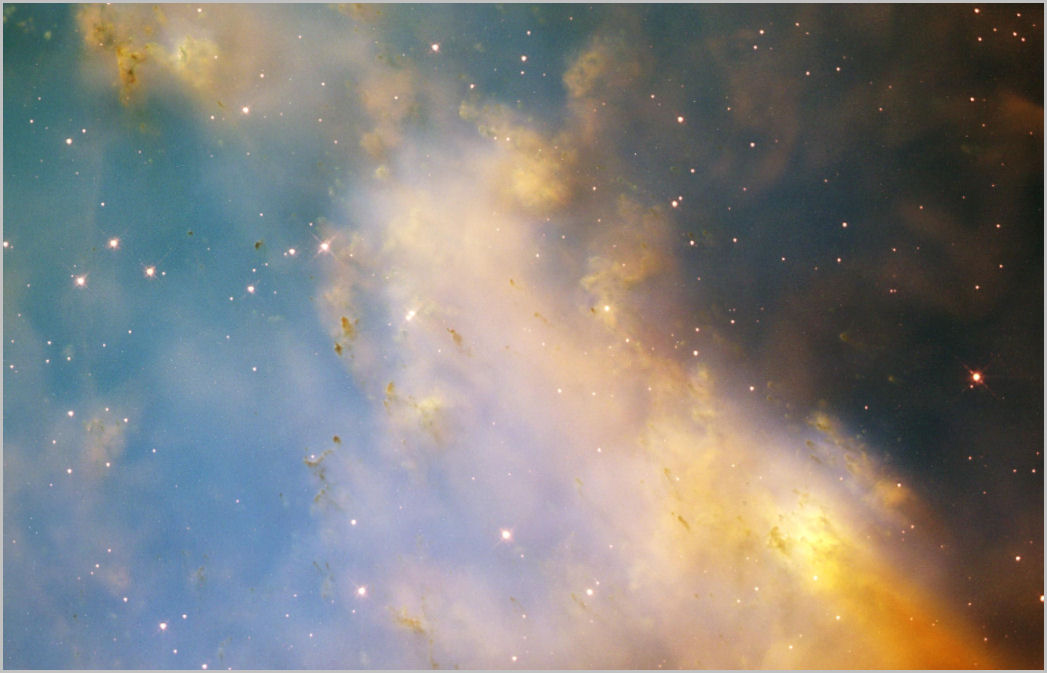
Up in the northeast corner of the constellation, the Hubble Space Telescope looked 191 million light years back through space/time to capture the extraordinary image of a 3,700 light year wide accretion disk surrounding a black hole. At the centre of the far away elliptical galaxy NGC 7052 is a black hole with a mass 300 million times greater than our Sun, slowly but surely gobbling up the stars, gas and dust of the galaxy that surrounds it.
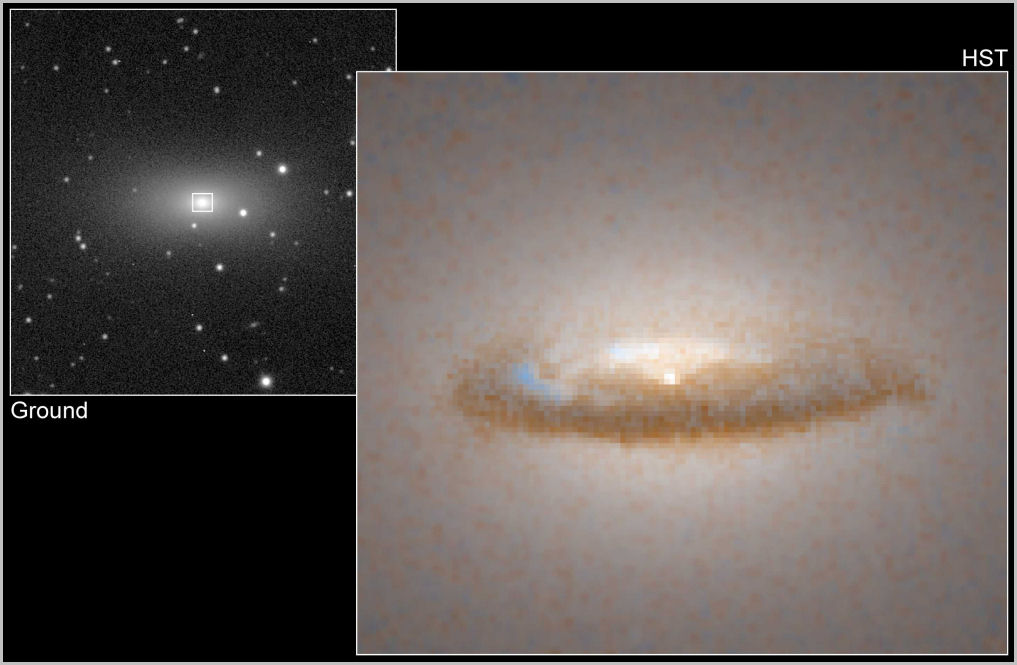
By the back foot of the fox, the Hubble Space Telescope looked very far back to the incomprehensible distance of 450 million light years through space/time to image the merging of two distant galaxies, named IRAS 20351.
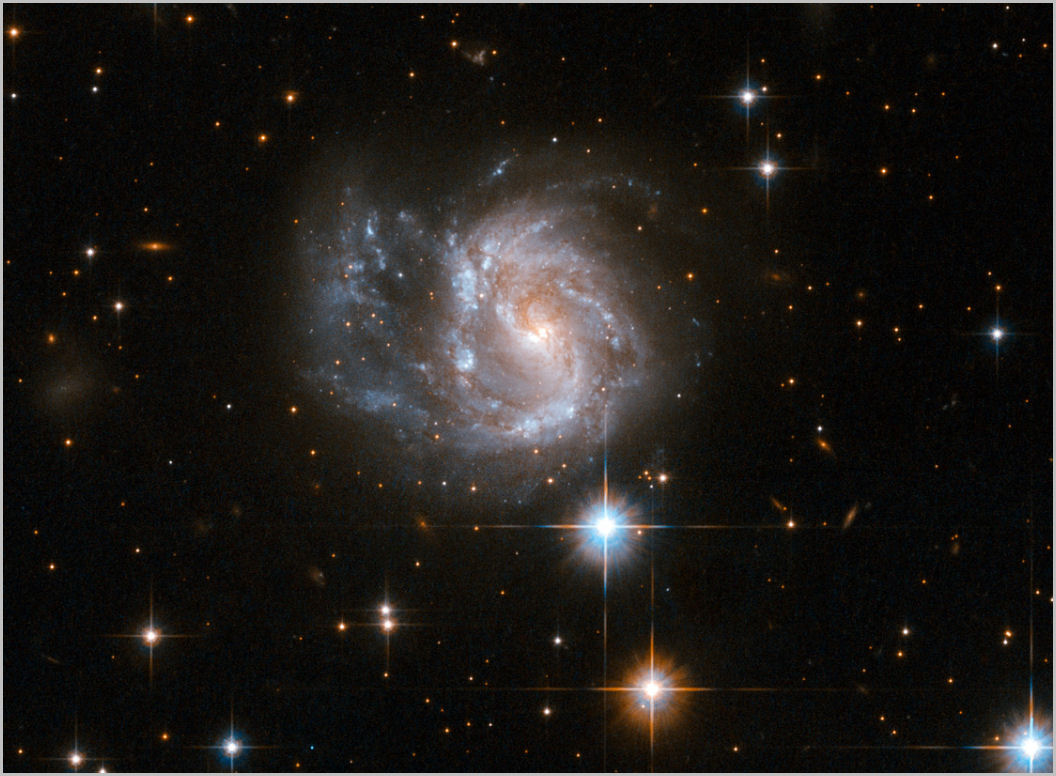
|
|
|
|
|
|